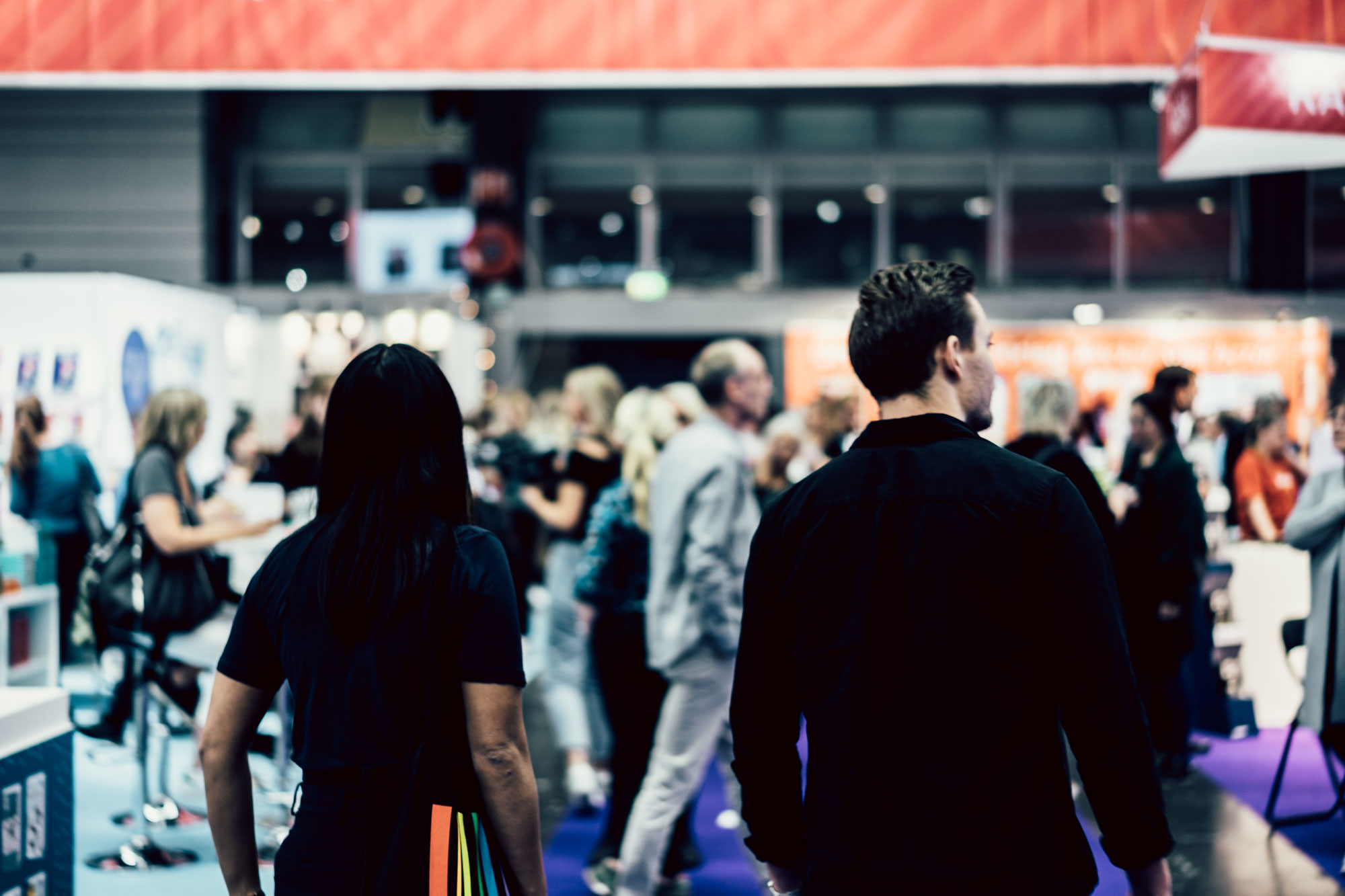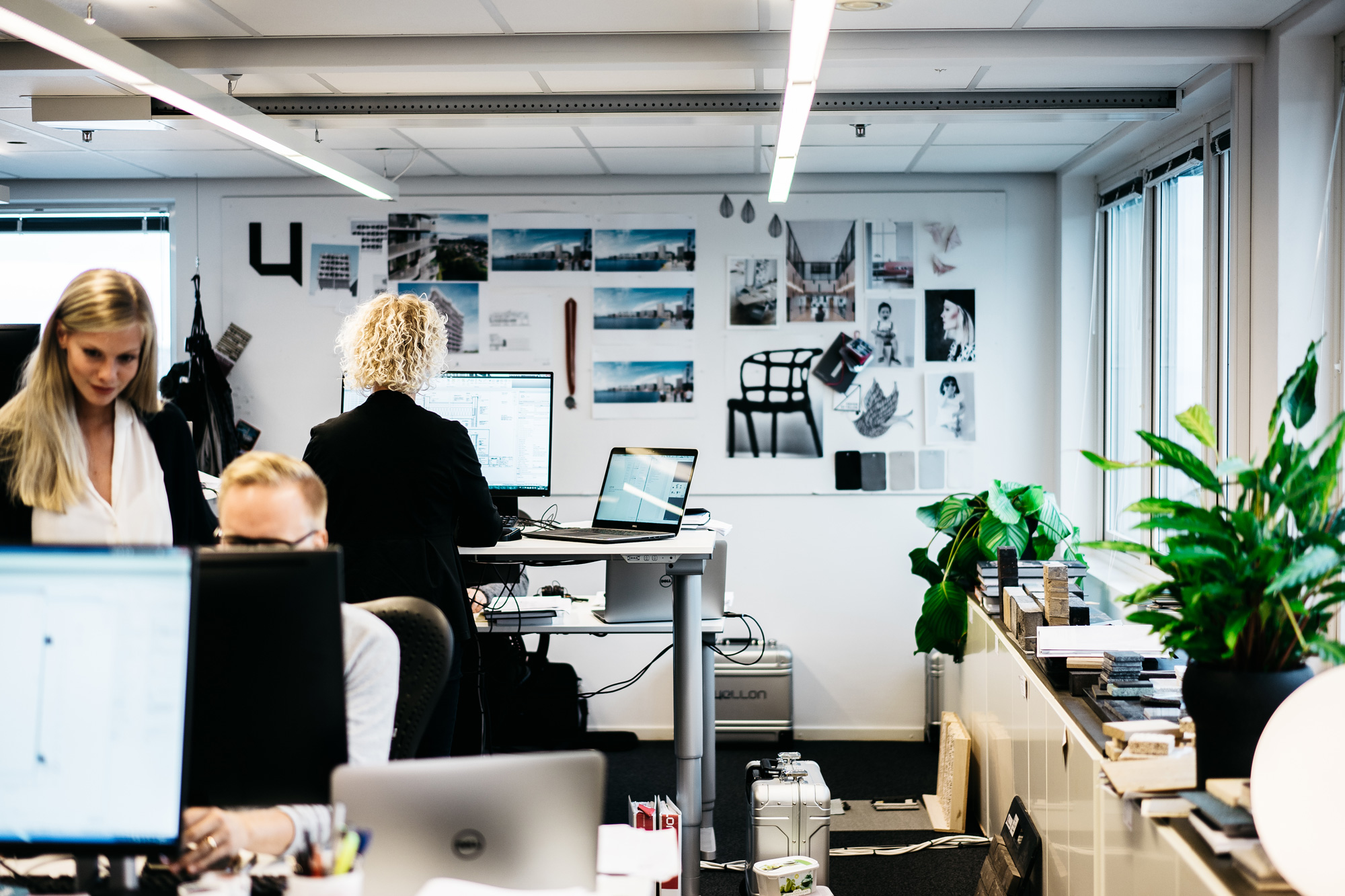Communication that triggers all your senses
For most of us, cemeteries are strongly associated with death and sorrow. And many of us are reluctant to visit them. We prefer not to stay in the garden of death unless we have to. Nevertheless, we have to, sooner or later. Perhaps it’s time to break convention and allow the idea of death to enter early in our lives?
Jenny Stefanec, Experience Designer at Yellon, strives to create beautiful cemetery places for energy and motion as well as recreation and rest. Not necessarily the last rest – but rather rest for thought and mind. A place to visit, to remember lost ones, to think about the great existential issues or to have a cup of coffee in the sun and just enjoy the moment.
‘I see the cemeteries of the future as something more than physical tombs and anonymous memorial parks. I see them as a space for the ones left behind and for life itself,’ she says, and continues: ‘Like many others, I’ve been very afraid of death. It’s probably because what you seldom talk about easily becomes scary. Over the years I have realised that it is not at all healthy if death is removed from everyday life. It’s easier if you know that there is a nice place where one can be remembered and where nice memories are created.’
Jenny Stefanec’s business card says that she is an experience designer. She also embraces several other professional roles: architect, anthropologist, behavioural scientist, psychologist, designer and writer. In short, her career is about constructing experiences on a strategic level. ‘It may seem fluffy; experience design is an interdisciplinary field with the aim to meet the needs of the target audience. The most important thing to me, whether I work with cemeteries or something completely different, is to set the story through the entire project. And the end result will always be better if you have to think conceptually from the beginning. I put a lot of focus and time on motion, colour, shape, light and sound. I want to work with human perception where several senses are triggered and trigger each other.’
‘In Sweden, we are very afraid of cemeteries.’
Together with Cemetery Manager Lars Öhrn, Jenny has therefore accepted the assignment to put together a design proposal for Brämhult’s new cemeteries. The background is a real problem: there is a lack of burial places in the Borås pastorate.
‘In Borås we’ve been exploring various possibilities for years since it’s our duty to find a solution. The problem was that an attractive residential area with new houses and preschools had been built near the meadow that was being considered for use as a cemetery. And people were not happy to have a cemetery nearby. People are terrified of cemeteries and death, but I want them to see them as natural parts of life,’ says Lars Öhrn, Cemetery Manager since the early 2000s. ‘We have a lot to learn from Denmark where life is on-going also in the cemeteries; for example, it’s okay to lie down and sunbathe there. When Jenny and I started discussing the matter, we noticed that we had the common desire to create a green recreation site for the entire family. A place where you can watch birds and frogs or enjoy your Sunday picnic. Simply a park that benefits the public.’
A controversial but realistic mindset.
Lars’ and Jenny’s way of thinking is highly controversial in many ways, and there are mixed opinions about the project among the public. Among the strong point of views is the concern that cemeteries will turn into amusement parks.
‘Of course, the site needs to be designed to take into account all those seeking silence. When we talk about an area for activities, we do not mean a playground but a park that is a natural part of our lives. To be blunt, cemeteries must be built for younger people; those who will continue to live there and around it. Over the years I’ve learned that whatever one does, it causes reactions. That’s also why we have the world’s most important job,’ says Lars. ‘The cemeteries in Sweden are some of our most beautiful parks. They should be a place of life, part of everyday life and it would be sad if they were just a place for the dead. I have noticed an increasing understanding for this. The other day I had something as unusual as a guided crematorium tour for the Swedish Tourist Association.’
Controversial but also realistic. At the time of writing, a building permit for an area of 21,000 square metres is expected, a large part of which will be devoted to different kinds of activities, but that will also accommodate 700 new coffin sites. The shape of the activity area has not yet been decided, but if Jenny gets to decide there will be three different parts, three different moods and three different stories. Three sites that strengthen the feeling that one is spending time at the cemetery with nature – and life – constantly present.
‘I strive to create different moods based on the perspective that everything is communicating. Sometimes experience designers are criticised for designing the world and controlling the way spaces should be perceived, but I see it as helping people navigate the landscape, trigger their imagination and create reasons for them to take a break. I see the same trends as in movies, theatre plays or gaming – it’s about people’s perception and how to give them opportunities for identification. My vision is to design things, touch people and evoke feelings. And sometimes to provoke because the world is not perfect and sometimes needs to be questioned.’
Below, visualisation examples from Jenny’s design proposal for Brämhult’s new cemeteries.
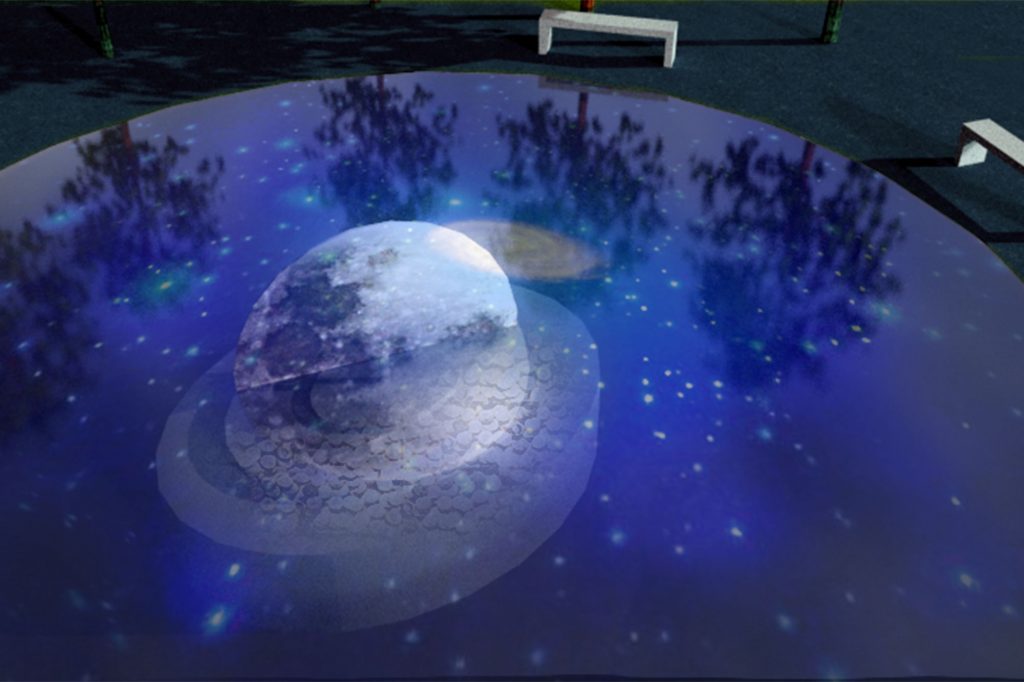
The first area focuses on a beautiful frog pond as a natural merging point for heaven and earth. The experience and feeling are reinforced by different symbols which don’t have a direct religious link, but arouse universal questions about our existence and the world around us. Stars, galaxies and different kinds of mirror effects. Dimensions that no one – and everyone – can understand. In the first area you can also find a wishing well.
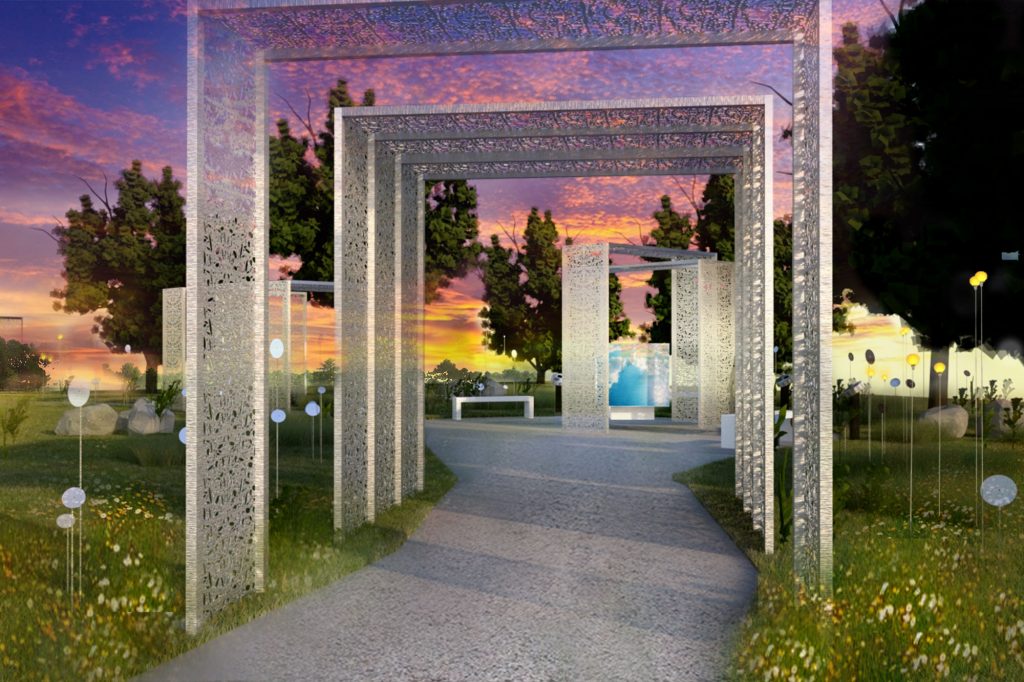
The second area is a viewpoint on a hill to which the road goes through an archway and a visual display of lights and shadows. Below, meadows bloom and beautiful oak trees stretch towards the sky. Among the greens and the trees are hidden speakers with different audio tracks. Quiet music. Sounds of soft voices. Greetings from past times. Whispers, memories and stanzas. At the viewpoint there is a memory box made of glass where words, greetings, pictures and other memories can be projected through glass. A site that evokes memories, that comforts and conveys different sentiments.
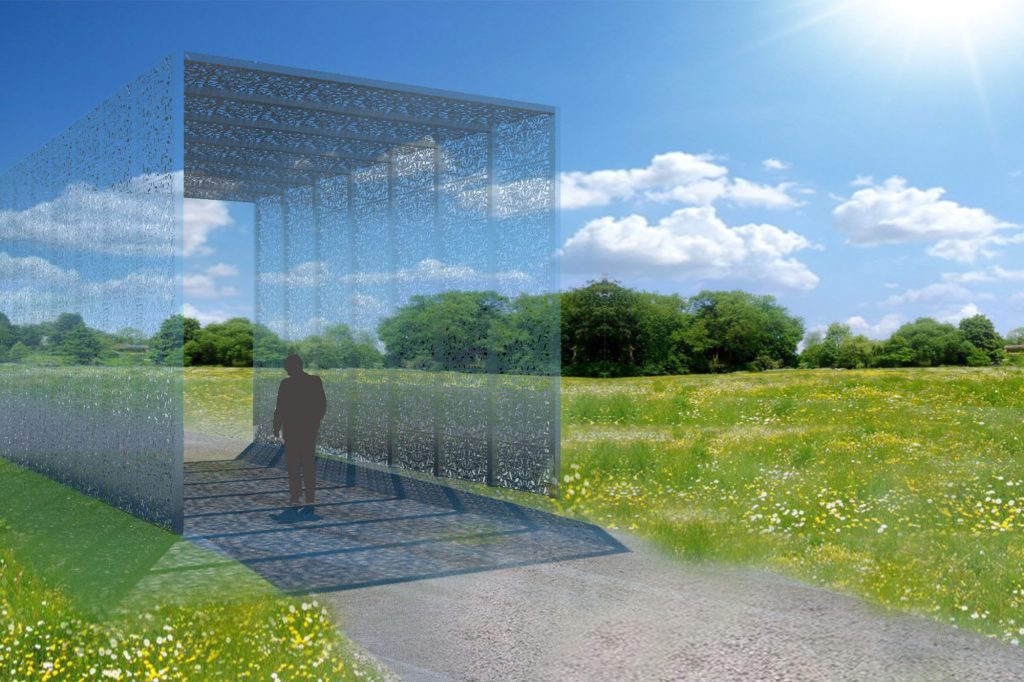
The third area is an enclosing around today’s memorial park. Here the feeling is enhanced by different kinds of light projections. The memorial park is also on a hill and whoever walks there is accompanied by a small spark of light. Around the memorial park there are places for reflection. Where you can sit down for a while, have a conversation in a low voice or just be alone with nature.



